Working in professional kitchens, I’ve learned how to avoid letting anything go to waste. Vegetable scraps turn into stock, egg shells are transformed into compost. I even bake bread from a local brewer’s spent grains.
But no matter how much hummus, falafel, or roasted snacks I make, I’ve never once thought to reserve the leftover liquid from canned chickpeas for another use in my cooking after I make a recipe like chickpea veggie burgers or chickpea grain bowls.
That opaque, viscous stuff always goes straight down the drain.
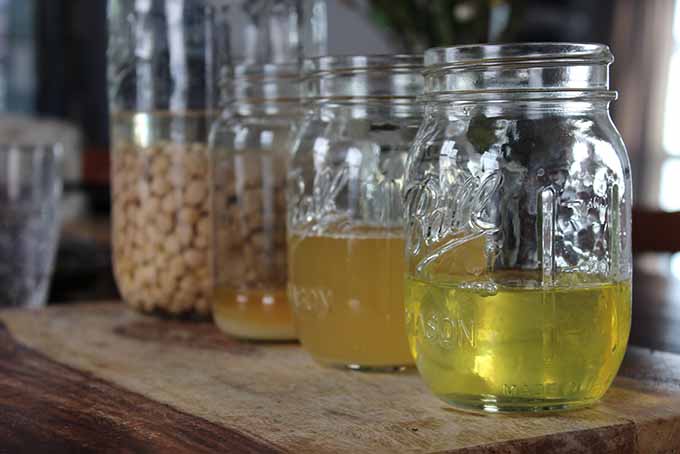
Until now.
Thanks to Facebook’s collective hive-mind of vegans, that once wasted juice now has a name: aquafaba.
Made up of a unique blend of starches, proteins, and other soluble plant solids, it turns out that the cooking liquid of beans functions an awful lot like eggs. It can emulsify, foam, bind, gelatinize, and thicken. While most of its properties mimic the white, it has some effects of the yolk as well.
The name aquafaba was coined by Goose Wholt, a newly vegan software engineer from Indiana and leader of the community that first started experimenting with the liquid.
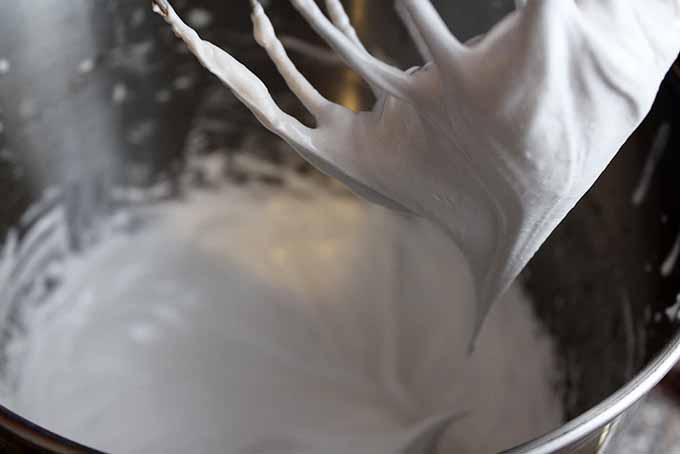
The inverse of the Latin words for bean and water, the name rolls right off the tongue (and sounds a touch more appetizing than bean juice).
The ingredient has been popular on the vegan scene since early 2015, when a group of Facebook users collaborated to test its limits. A high-end mayonnaise company grew intrigued and developed vegan Fabanaise, now available in specialty grocers across the United States. Popular food bloggers soon joined in the game, and now this handy alternative is becoming mainstream.
Eager to join the ranks of these food science detectives, I jumped onto their forum boards, made a big pot of hummus, and started to play.
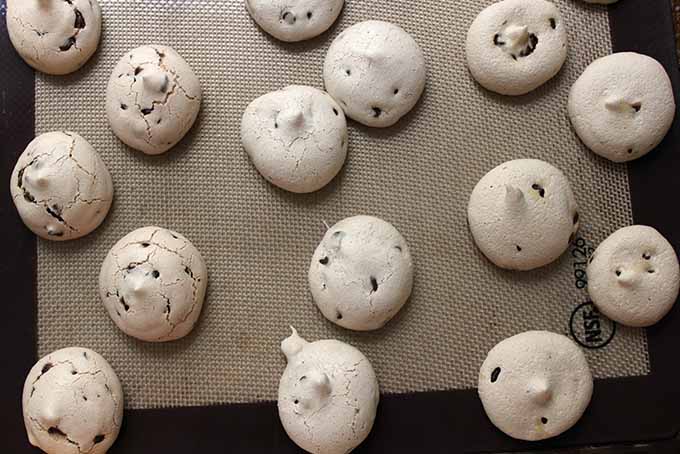
The exact science of aquafaba is still unknown. Recent research reveals that it is made up primarily of starches and proteins, but the exact composition is still being studied in order to understand why it behaves the way it does.
The liquid reserved from most types of beans is said to function in similar ways. Because of its more neutral flavor, the liquid from chickpeas has been the most popular form used.
I decided to test it out as a direct substitute in a series of recipes that feature different properties of the egg. Can it whip like a meringue, or emulsify like a yolk? Can it leaven in baked goods, or coagulate in a curd?
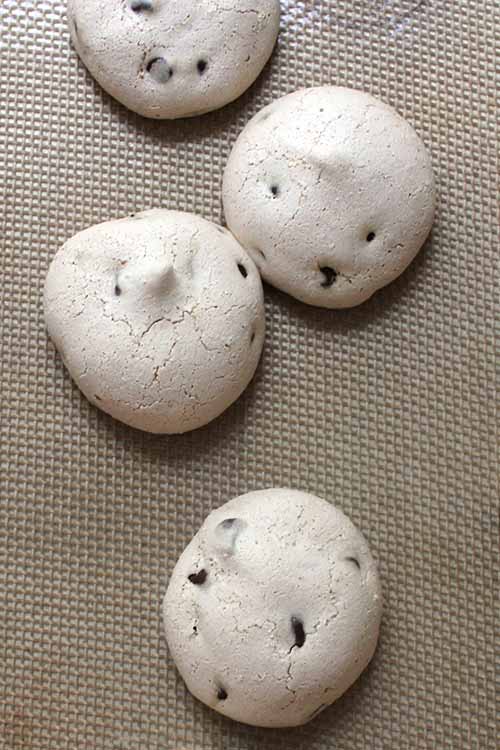
Are you curling up your nose yet? Chickpeas in my cookies!? No. Thank. You.
Trust me, I was skeptical too, at first. It took great bravery to swallow that first bite. But thinking back to the summer I spent nannying a child with a dangerous egg allergy, I conquered my fear of the flavor.
And let me tell you, this stuff is revolutionary.
Making the Aquafaba
“Were having falafel for dinner tonight!” I announced to my roommates, who were already full from an abundance of hummus.
I’m not used to the chickpeas themselves being seen as the usable “waste.” But my first step in decoding this magical ingredient was testing out the best method of acquiring it in the first place, and with that came mountains of chickpeas for dinner.
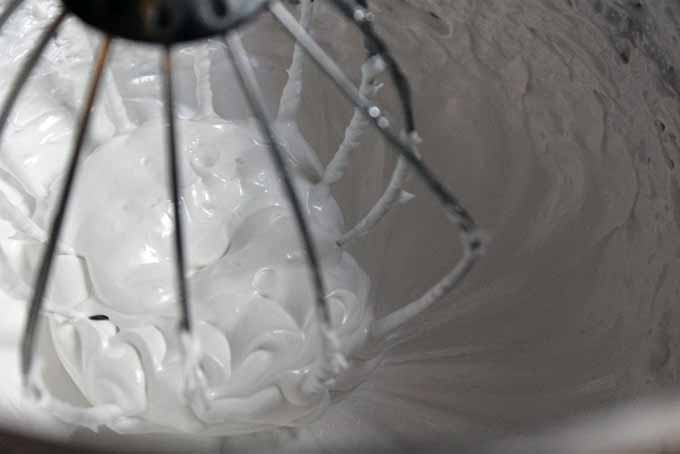
Turns out you can make the A.F. yourself, or just use the stuff that’s left behind in your cans of beans!
In my experiments, both varieties behaved the same way, regardless of their provenance – just be wary of the sodium content. If you’re going for the canned option, be careful to look for low-sodium varieties. Salt-free is your best bet.
Here’s how to make your own: Soak four cups of dried chickpeas in three quarts of water overnight. In the morning, pour the beans and soaking liquid into a slow cooker along with three more quarts of water. Let this cook on low for 8-10 hours.
When the beans are cooked all the way through, drain off the cooking liquid and let it cool. This is your aquafaba.
Some Aquafabers suggest boiling the liquid – whether from a can or made on your own – until it achieves the same viscosity as egg whites.
Mile-High Meringue
My first test was making meringue – could anything ever whip up as light as a white?
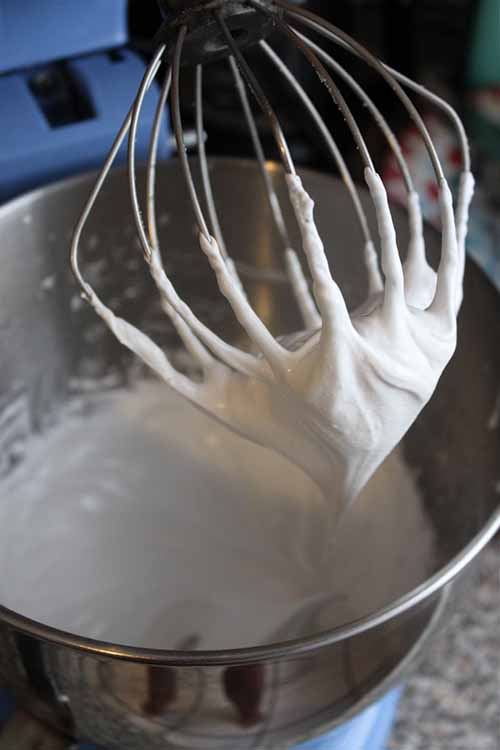
Turns out, it can!
I followed my favorite recipe for chocolate chip meringues, making batches from egg whites, canned aquafaba, and my homemade liquid side by side. You’ll need a trusty stand mixer or be prepared to develop your arm muscles using a whisk manually!
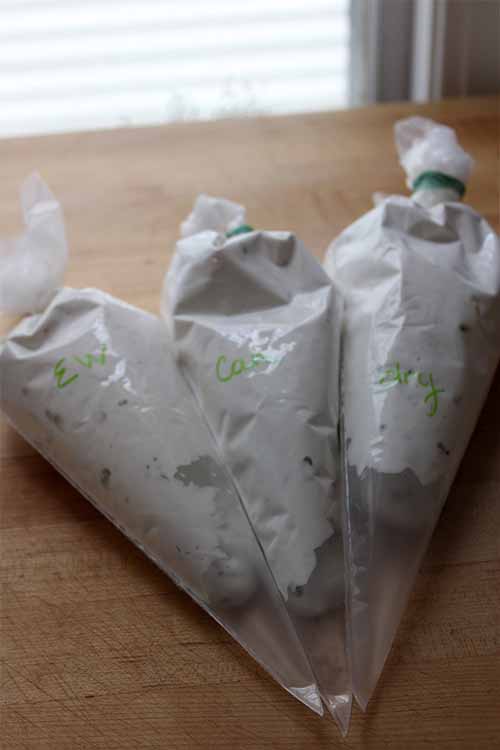
While the A.F. produced a hollower cookie, the flavors were identical. Not a hint of beany aftertaste.
Get the recipe for these delicious aquafaba no-egg meringue cookies now!
Emulsified Mayo
The next test was emulsification.
Yolks play an important role in the making of mayonnaise – when combined with salt and acid, they can hold a significant quantity of oil and air to create a light spread. The incorporation of these fats into a smooth sauce is called emulsification.
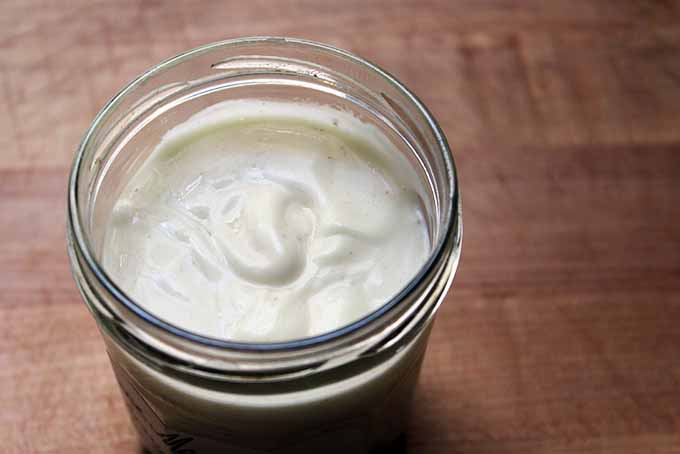
So I tested out my favorite recipe, subbing A.F. for eggs, and it turned right into a shiny, thick spread that could fool the palate of any mayo fan.
Get the recipe now! And try a spicier version, a creamy chipotle aioli with a punch of spice!
Binding in Bread
With every test exceeding expectation, it was time to move on to something a little bit more tricky: baking.
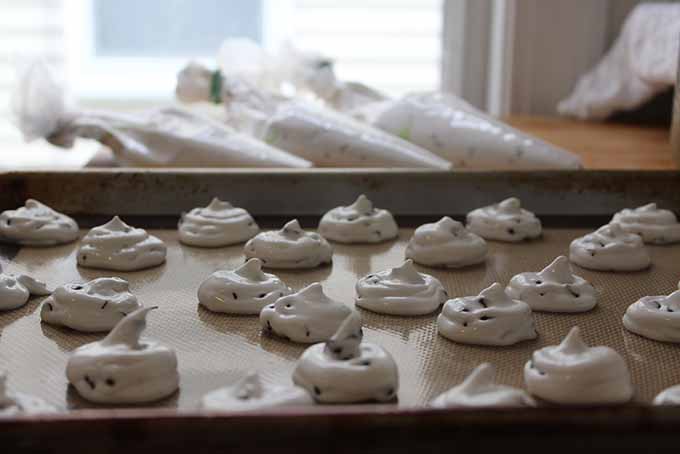
Would my newfound friend be able to bind and leaven in a simple quick-bread recipe?
I tried out a loaf of zucchini bread, substituting 1/2 cup of liquid for the 3 eggs, and the results were once again a surprise.
The flavor of the bread was impeccable, and the texture quite nice as well. It was a bit more crumbly than when made with eggs – suggesting the binding power is not quite as strong – but a success nonetheless.
Get even more tips and tricks with our article on egg-free baking! Aquafaba is one among the many methods available that will help you make delicious goodies without eggs.
Coagulating in Curd
Alas, it was time for the final experiment: making an egg-free curd. Unfortunately, this was an utter failure.
It turns out the most important difference between bean juice and an egg is the coagulation of proteins with heat. Since the structure of a curd is created through the interlocking of protein strands, this difference proved to be aquafaba curd’s fatal flaw.
Faba Future
The full potential for aquafaba is, as of yet, unrealized. Because its chemical structure has not yet been fully decoded, it maintains an air of mystique.
Developing recipes requires a commitment to that age-old mantra, if at first you don’t succeed try, try again.
If you are interested in joining along with the leagues of cooks testing the ingredient out, just find the Facebook group “Aquafaba Everything.” Read about other’s adventures and upload recipes of your own.
Or if you want to stick to what’s already been tested, try my meringues and mayo!
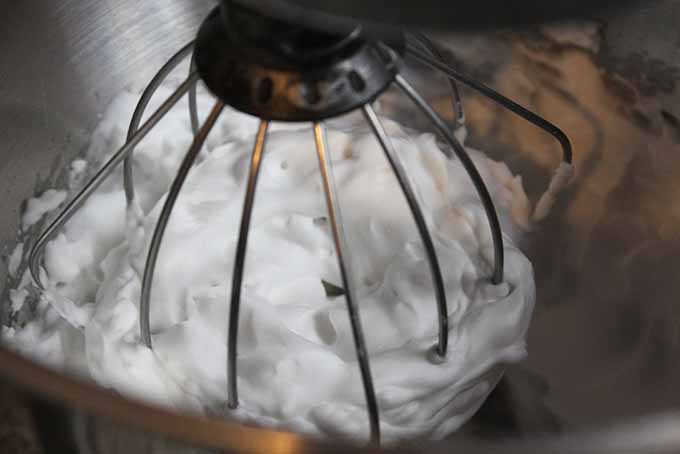
Tips
- If using the liquid from cans of chickpeas, look for a low-salt or salt-free variety. Any added sodium will noticeably affect the overall flavor.
- If your liquid is very thin, boil it over medium-high heat for 5-10 minutes in order to reduce it to the viscosity of an egg white.
- Many recipe developers suggest using the fresh liquid within a week, or freezing if it needs to be kept longer. But I’ve been working my way through a fresh batch for 3 weeks now and it’s still going strong!
- 4 cups dried chickpeas
- 6 quarts water
- Soak the chickpeas in 3 quarts of water for 8-10 hours, or overnight.
- Pour the chickpeas and any remaining soaking liquid into a crockpot along with another 3 quarts of water. Let cook on low for 8-10 hours.
- Once chickpeas are soft all the way through, strain out the beans and let the liquid cool.
- If the liquid is very thin, boil on medium-high heat for 5-10 minutes to reduce to the viscosity of egg whites.
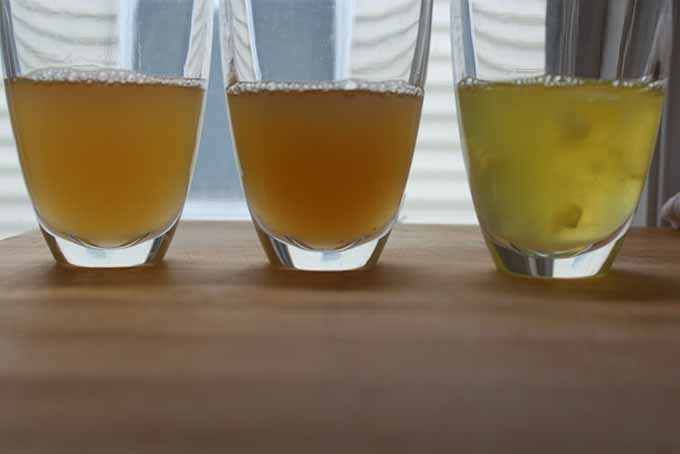
Cooking by the Numbers..
Step 1 – Soak
Soak your chickpeas in 3 quarts of water overnight. I do this in a half-gallon mason jar.
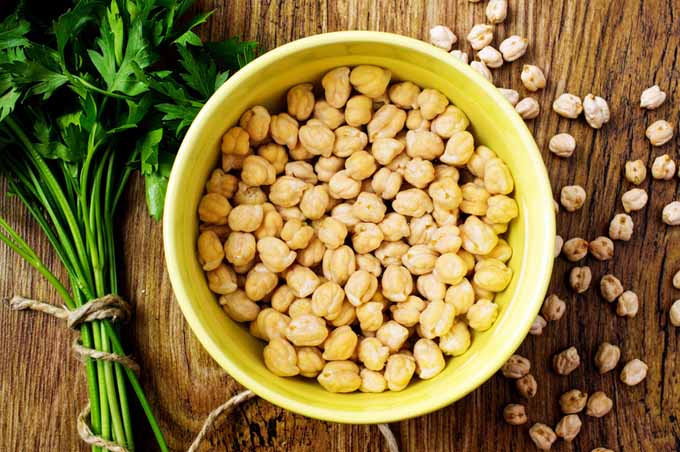
The dried chickpeas will expand to about double their size, soaking up the majority of the water in the jar.
Step 2 – Cook
Pour the beans along with any remaining water into a slow cooker, and let it cook on low for 8-10 hours.
This can also be done by simmering the beans on the stove for an hour and a half, but cooking in the crockpot reduces the chances of accidentally boiling off all of your liquid gold!
Step 3 – Drain
Strain out the beans (if you’re looking for suggestions on what to do with them, try out this delicious soup!) and let the remaining liquid cool. If the cooled A.F. is about the thickness of egg whites, it’s ready to go.
Either use it right away, store it in the refrigerator in an airtight container, or pour it into ice trays and freeze.
Step 4 – Reduce
If your A.F. is running a bit thin, just pour it into a large pot and boil on medium-high heat for 5-10 minutes. Watch the pot closely, as you don’t want to let it reduce too far – reducing by about a quarter should suffice. It will run a touch thicker once cooled.
Are you brave enough to test new limits with the juice of a bean? Could this eggless wonder be the key to new culinary adventures for you? Even if you’re wary, I encourage you to try it out – I promise you’ll be amazed at the results.
Get to know the garbanzo even more by reading our article all about this cute bean!
Let us know in the comments what types of recipes you’d like to see, and be sure to share your own aquafaba success stories!
Unless otherwise noted, photos are by Kendall Vanderslice, © Ask the Experts, LLC. ALL RIGHTS RESERVED. See our TOS for more details.
About Kendall Vanderslice
Kendall’s love of food has taken her around the world. From baking muffins on a ship in West Africa and milking cows with Tanzanian Maasai, to hunting down the finest apfelstrudel in Austria, she continually seeks to understand the global impact of food. Kendall holds a BA in Anthropology from Wheaton College and an MLA in Gastronomy from Boston University, and has worked in the pastry departments of many of Boston’s top kitchens. Based in Somerville, Massachusetts, Kendall helps to run a small community supported bread bakery and writes about the intersection of food, faith, and culture on her personal blog, A Vanderslice of the Sweet Life.



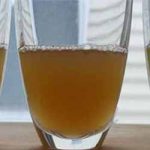



This is actually really interesting. I often find myself googling things I can substitute when baking. You know how it is. Sometimes you are missing eggs, sometimes you are missing butter. While I can’t see myself saving the aquafaba everytime I open a can of chickpeas, next time I am short and egg when baking, I will crack open one of the cans of chick peas that we always have in our cabinet. Thanks for the tip!
Yes, it is so great to know that there is such an easy egg substitute for when you run out! It really is such a handy alternative!
What a find – I can’t tell you how much I appreciate this article. I don’t have an egg allergy – but I am allergic to waste. I cook loads of chickpeas and have often bemoaned that I have to pour the water they are cooked in away. No longer!
This is absolutely amazing! I have never heard of this. Recently my friends have gone vegan and wanted me to try new recipes, but many call for like flax eggs and it seemed like too much work to keep creating it just for one recipe. Thank you for sharing. I think if we keep finding uses for what we consider “waste” we may be able to be healthier and waste a lot less. Not to mention, even if you’re not a health nut or into being vegan this would be amazing if you’re in a pinch. You could just open up a can of chickpeas instead of having to run to your neighbor’s house to borrow an egg.
Yes, this is a great vegan alternative — much better than flax “eggs”. It mimics the properties of an egg much better and is also significantly cheaper and easier to use!
great idea thanks love your blog
What a fascinating article, now I have another option whenever a recipe calls for eggs and I have none on hand. You really lured me in with the beautiful photos of the meringue and mayo. However, the zucchini bread is what really got me on board.
Non-coagulation is a feature, not a bug 🙂 You can whip it boiling hot, for instance, like in swiss meringue. Also, great article 🙂
The Facebook group Vegan Meringue – Hits and Misses has a huge recipe file, background on aquafaba, and a nutritional analysis that was done on an aquafaba sample sent to a lab. If you really want to start using aquafaba, you gotta get in that group!
This is unbelievable (in a good way of course)! I’ve actually never heard of this before. My roommate makes hummus and other chickpea based dishes quite regularly so it’s definitely something I’d like to try out soon. I don’t always like working with eggs so this seems like an interesting substitute. Very keen on trying this out as an ingredient in baked dishes. A lucky find, this article!
This post has been incredibly helpful! Recently I have been trying to cook and bake more vegan recipes as I have a few friends that have converted to that lifestyle. I love to cook and bake for my friends whenever they come over and I enjoy doing it as a group activity as well. I will definitely be using these alternatives with them especially since they are so simple!
This is a great ingredient for vegan cooking, especially if you are not the vegan one! It is far easier to keep on hand and to substitute than any other vegan egg alternative. Glad you found it helpful!
What a great idea! I make hummos all the time and never knew there could be use for the excess liquid. I will definitely give the mayo a try, because I’d love to have a healthier fresh alternative. Looks tasty too, I love chickpeas!
I also like to use it to replace water in bread recipes (makes the bread moist), and add it to soups for a richer stock..
Thanks for a good article and the experiments! A coupe of things though: The first group that was created on Facebook is called Vegan Meringue – Hit and Miss and it is chock full of experiments of all things, not just meringue. Anybody joining it will be amazed at what people have been making and sharing!
The other thing, the recipe for home made AF calls for soaking the chickpeas and then using the same water plus additional water for cooking them. It’s my understanding that the soaking water is discarded because of some stuff in it and fresh water is used to cook them.
Thanks again for a very good article!
Well I am not a vegan, but in favor of the general growth of knowledge when it comes to food and nutrition, this is fascinating to me. It really makes you think about who really was the first person to discover this. Once you get over that, then, you have to wonder why you have not heard of it before. It is just so strange that I would have thought in all my years I would have heard of it. Thanks for the share.
It’s been a very recent discovery, just in the past couple of years — and it’s just now beginning to catch on!
I had to come and check this out after seeing the mayo recipe. I also shared this on another site, since someone was asking about this ingredient. Thanks for all the great info.
I like eggs, but they don’t like me. It’s not a vegan thing, just a stomach thing for me. So, this and the other concoction sound great for me. I’m going to see what I can do with this.
Who knew this stuff was so versatile? I also have to agree with others who said it’s great to use up everything and thus avoid waste.
Yes, this is revolutionary for people with egg allergies or sensitivities! I used to nanny a child who was very allergic to eggs. We spent a lot of time adjusting recipes to make cakes and cookies that she could eat. It would have been so helpful to know about aquafaba!
Wow, that’s fascinating!
What a great discovery for those with an egg allergy, vegans and those who just want to try something new! I am certainly going to give it a go.
So you have found it lasts for 3 weeks in the fridge?
How much AF do you use to replace one egg? I saw you used 1/2 cup for 3 eggs in bread – is that the same ratio for everything you tried? Oh, and what is 1/2 cup? As different countries have different size cups annoyingly! In Australia we use a 250ml cup…